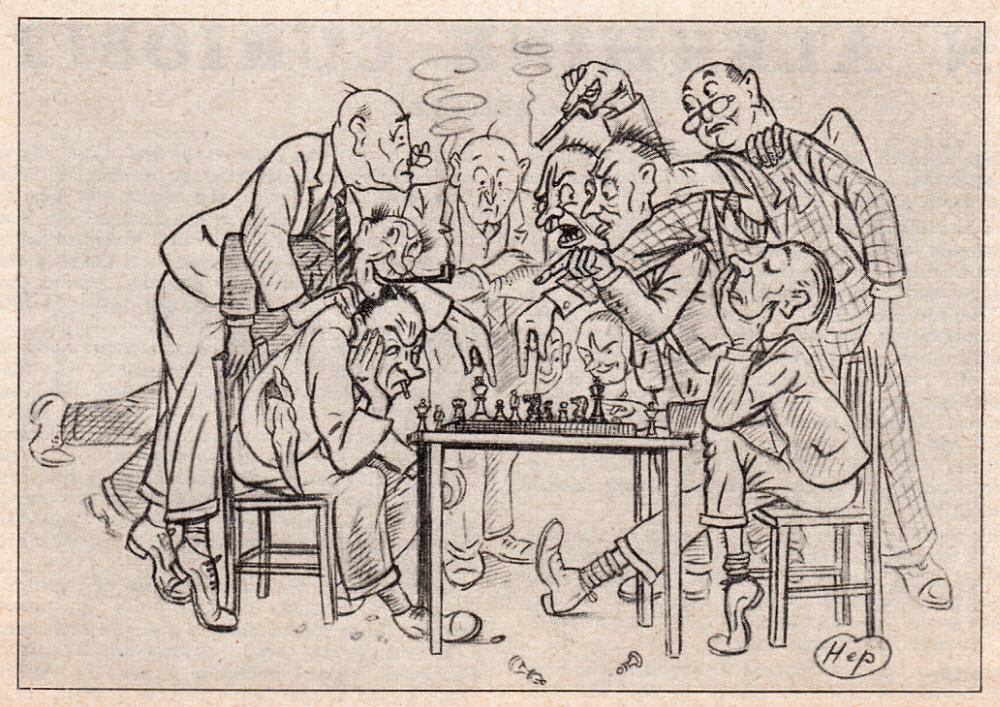
Edward Winter

CHESS, January 1952, page 75
‘The object of the game is, of course, to checkmate the King, and before the first move, the player should determine in his own mind how he is going to do it and then develop the fighting qualities of his men accordingly.’
Source: page 67 of How to Play Chess by Charlotte Boardman Rogers (New York, 1907).
Even so, the books are not unanimous that developing pieces in the opening is necessarily a good idea. From page 106 of A Complete Guide to the Games of Checkers and Chess by Maxim La Roux (Baltimore, 1916):
‘Before you stir your pieces, you ought to move your pawns, and afterward bring out your pieces to support them. …You are not, therefore, to play out any of your pieces in the early part of your game …’
One apparent problem with developing pieces is that an excessively strong attack may result. That, at least, was the warning on page 20 of Chess & Draughts Made Easy by J. Bishop (London, circa 1860):
‘Do not crowd your adversary’s king with your pieces, lest you inadvertently give a stalemate, which is a drawn game.’
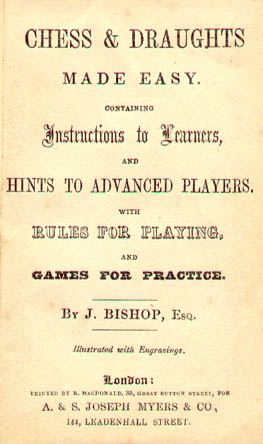
If an attack does develop, the opponent may buckle under the pressure and blunder away a piece, but should it be accepted? From page 22 of Chess Made Easy by J.A. Guthrie (London, 1922):
‘When your attack is in a prosperous way, never be diverted from it by taking any piece thrown in your way, as it may be a bait which your taking would cause your designs to miscarry.’
Castling is usually regarded as an important way of developing one’s game, but that has not always been the unanimous view. In C.N. 3119 Calle Erlandsson (Lund, Sweden) gave an English translation of the relevant passage of the first (1771) edition of C.W. v. Königstedt’s Kort Afhandling om Schack-Spel (‘A Short Treatise about the Game of Chess’). Chapter VII (About Castling) states, on page 23:
‘Great players never castle until the end of the game, and often never at all, as their king, although often in the middle of the board, nevertheless stands secure.’
Mr Erlandsson added that in the third, improved edition, printed in 1806, the start of the text was slightly different: ‘Good players seldom castle ...’
On the other hand, ‘castling often improves the situation when the game is crowded’ according to page 15 of the “Popular” Handbook of Chess by Professor de Lyons Pike (London, circa 1902). Some further extracts:
‘The rook (also called the castle) moves horizontally the entire length of the board, if the space is open.’ (page 7)
‘Perpetual check is when the king can be placed in check at almost every move. When this is the case the weaker side can demand checkmate in any given number of moves. If his opponent fails to do this it can then pass as a drawn game.’ (page 11)
‘Stalemate is when one of the players has nothing left but his king, which is so situated that he cannot move without placing himself in check.’ (page 11)
‘When a player fails to cry “check” his adversary need not unless he likes move his king out of check, nor even cover him.’ (page 13)
‘Drawn games count for nothing.’ (page 13)
‘The Allgaier Gambit: ‘It is not a safe opening, although, if successful, it will prove a strong one.’ (page 25)
‘A great point to be observed in finishing a game, is, never to allow the king to escape into the centre of the board.’ (page 31)
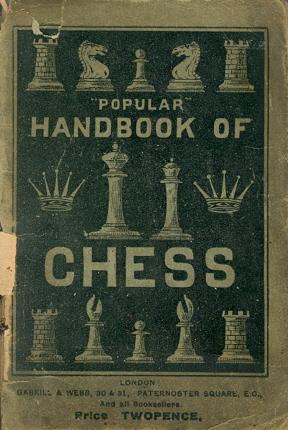
Another book with a stream of notable advice is Chess and How to Play It by B. Scriven, brought out by Universal Publications Ltd. in the 1930s. Some snippets:
‘In chess, however, the sole aim is to attack the opponent’s king.’ (page 32)
‘Of course, another form of drawn game arises when both players are so weakened that neither has the strength to check the other.’ (page 34)
‘Knights can do a great deal of damage which is only apparent when it is done.’ (page 41)
‘As soon as a player take his hand from a piece the move is finished. It can only be altered by the graciousness of the opponent.’ (page 47)
‘If the king is checked, but “check” is not announced, the owner of the king need not attend to it. Though there is no rule on the subject, it is usual to announce “check” when the queen is affected. If “check” is announced and the owner of the king proceeds to move the king, then realizes that there was no “check” he may take back the move. The same applies if any other piece is moved for the purpose.’ (page 48)
‘... if the game is opened well, the middle game will largely take care of itself.’ (page 50)
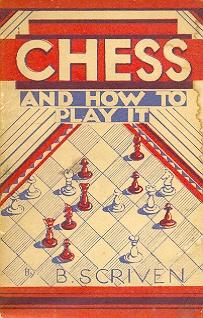
Indeed, B. Scriven’s book offers, on page 49, what may be the single most valuable piece of advice for chessplayers of all levels:
‘Before making a move, note all the consequences.’
This article originally appeared at ChessBase.com.
See also Chess and How to Play It.
C.N. 27 referred to ‘one of those rare games in which everything is so orderly and logical that for many players annotations would be superfluous’. [The game was Capablanca v Romi(h), Paris, 11 January 1938.] A writer who took this approach to extremes was Weaver B. Adams, in his introduction to How to Play Chess:
‘A word with regard to the games which follow: there are no annotations, because I feel that they are not necessary. Each move is crystal clear. No other move could possibly be played in the position. This is what happens in a game when you get the right start. Essentially chess is not difficult. It is only because of the popularity of certain openings that we get an opposite impression. But by applying the principles, (1) maximum increment of power afforded to the piece moved, (2) maximum mobility (usefulness of the square vacated), (3) minimum loss of option (don’t move a piece until it is certain where it is best posted), and (4) minimum weaknesses (check all weaknesses to see if they can be tolerated), seldom will it not be clear that but one move satisfies all of these conditions.’
(1612)
‘Habe vor guten Zügen keine Angst.’ (‘Of good moves have no fear.’)
Savielly Tartakower, Deutsche Schachzeitung, December 1927, page 354.
(2513)
A selection from the maxims and hints of Richard Penn given on pages 398-400 and 413-416 of the Chess Player’s Chronicle, 1842:
‘Do not be alarmed about the state of your adversary’s health, when, after losing two or three games, he complains of having a bad headache, or of feeling very unwell. If he should win the next game, you will probably hear no more of this.’
‘Never (if you can avoid it) lose a game to a person who rarely wins when he plays with you. If you do so, you may afterwards find that his one game has been talked of to all his friends, although he may have forgotten to mention 99 others which had a different result. Chess players have a very retentive memory with regard to the games which they win.’
‘There is as much difference between playing a game well, by correspondence, and playing one well over the board, as there is between writing a good essay, and making a good speech.’
‘Chess holds forth to the philosopher relaxation from his severer studies, – to the disappointed man, relief from unavailing regret, – and to the rich and idle, an inexhaustible source of amusement and occupation.’
‘The real character of a man’s mind may, almost always, be known by his behaviour under the varying circumstances of this most interesting game. The triumph of the winner, and the vexation of the loser, are often coarsely displayed amongst inferior players; and, although good players very rarely give way to this degrading weakness, still, the good breeding of some of them, towards the end of a difficult match, is not always quite perfect.’
Penn’s observations first appeared in book form in Maxims and hints for an angler … To which are added Maxims and hints for a chess player (London, 1833).
(2642)
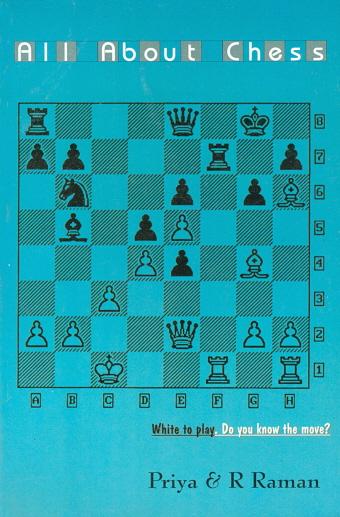
C.N. 3242 (see Chess Jottings) quoted counsel from All About Chess by Priya and R. Raman (Minerva Press, New Delhi, 2000), including the following:
Our collection includes a small nineteenth-century book (undated) which is absent from various chess bibliographies and catalogues, Chess & Draughts Made Easy by J. Bishop.
Only 33 pages are needed for J. Bishop to make chess easy, and the ‘Advice to Beginners’ (pages 16-23) is invaluable, containing such nuggets as (item 10):
‘Calculate your moves forward, so that you may safely sacrifice a few pieces to effect your purpose; the loss of a few pieces for the attainment of a position gives brilliancy to the play: such bold attempts make fine games.’
Item 25 is even more helpful:
‘If ever your game be such that you have scarce anything to play, you have either brought out your pieces wrong, or, what is worse, not at all; for if you had brought them out right, you must have variety enough.’
Of all the guidelines, however, it is item 30 that deserves to be writ in letters of gold by chessplayers worldwide:
‘Every now and then examine your game, and then take your measures accordingly.’
(2710)
Chess Notes cannot claim to be on the cutting edge of opening theory, but we gladly do our bit to offer alternative perspectives. Below are two paragraphs from the chess section in Charles Cotton’s book The Compleat Gamester (London, 1674):
‘The first remove is divers according to the judgment of the Gamester, as some will first remove their Kings Knights Pawn one single remove, that is to the third House in his own File, others play the Kings Rooks Pawn first a double Draught; but the best way is to play the Kings Pawn first a double remove, that so if they are not prevented by their adversaries playing the like, they may still remove that Pawn forward with good guard; for he will prove very injurious to the adverse King.
This Pawn I shall advise you to remove first, but not so venturously as a double remove, because if you cannot guard him cunningly, then are you like to lose him with a check to your King, by the Queens coming forth upon him to the great hazard of your Kings Rook; therefore play your Kings Rook one single remove, that there may be way made for the coming forth of Queen one way two Houses asloap, and to your Kings Bishop the other way three Houses asloap, and so upon the neglect of your Adversary he may be put to a Scholars check, at least in danger of it: here note it is ill to play the Bishops Pawn first, and worse to play the Queens.’
(3320)
An improbable quotation on page 50 of The Beginner’s Book of Chess by F. Hollings (fourth edition, Philadelphia, circa 1930):
‘Always keep Capablanca’s advice in mind: “Get out your pieces – get ’em out quickly”.’
(3363)
Pages 273-274 of Kings, Commoners and Knaves presented some quotes from Marshall’s book Modern Analysis of the Chess Openings (Amsterdam, 1912/13). Here are a few more, from the ‘Casual Remarks’ section on pages 15-17:
‘I have often been asked, how can one improve at chess. I should advise that to “take the board and men, and analyze by oneself” is as good a way as I know anyway, it will familiarize one with the pieces, also to practice on, an opponent what has been studied.’
‘The different phrases of the game and well to think about are, – developement, position play, combination, attack, defense, simplicity, middle and end game play, also complications.’
‘The finest combinations are not always in the longest game, play for a centre, towards a centre and from a centre. The strongest attack are often a conception of small advantages and the hardest thing in chess is to win a won game.’
And from pages 60-61:
‘Of the Centre Gambit, little can be said in White’s favour, except the unwary falls, into one of the innumerable traps, with which this opening seems to afford. one in particular won by the great playwrite, Sydney Rosenfeld, against Lasker, in New-York, i.e. 1. P-K4, 1. P-K4; 2. P-Q4, 2. PxP; 3. QxP, 3. Kt-QB3; 4. Q-K3, 4. Kt-B3; 5. KtQ-B3. not (5. P-K5, 5. Kt-KKt5; 6. Q-K4, 6. P-Q4; 7. PxP en passant 7. B-K3; Blacks fine development would soon tell). 5. B-Kt5; 6. B-Q2, 6. Castles; 7. Castles, 7. P-Q4; 8. PxP, 8. KtxP; 9. Q-Kf3, 9. KtxKt; 10. BxKt and won,’
We have proof-read the above with particular care to ensure maximum accuracy (i.e. inaccuracy). The game-score jumble amounts to the following (on which further information is sought):
Sydney Rosenfeld – Emanuel Lasker
New York (date?)
Centre Game
1 e4 e5 2 d4 exd4 3 Qxd4 Nc6 4 Qe3 Nf6 5 Nc3 Bb4 6 Bd2 O-O 7 O-O-O d5 8 exd5 Nxd5 9 Qg3 Nxc3 10 Bxc3 and wins.
Marshall did not mention that White could have won a piece with 9 Nxd5.
(3364)
‘In the words of the late Alderman Thomas Avery, of Birmingham – a wise man and a good chessplayer – “Chess is the instructor of youth, the comfort of middle age, and the delight of old age. But let chess occupy its proper place, for I have known fortunes lost by too much time devoted to it. Chess affords amusement, pleasure, solace, and instruction, but it is not the business of life.”’
Source: article entitled 'Some advice to young players' by F.P. Wildman, on page 275 of the July 1901 BCM.
We gave the passage on page 389 of Kings, Commoners and Knaves.
To the Chess Notes main page.
To the Archives for other feature articles.
Copyright: Edward Winter. All rights reserved.